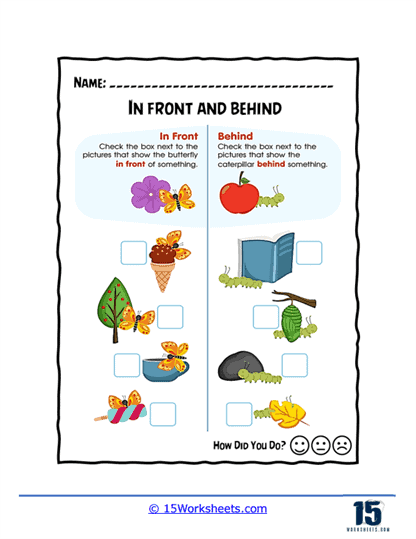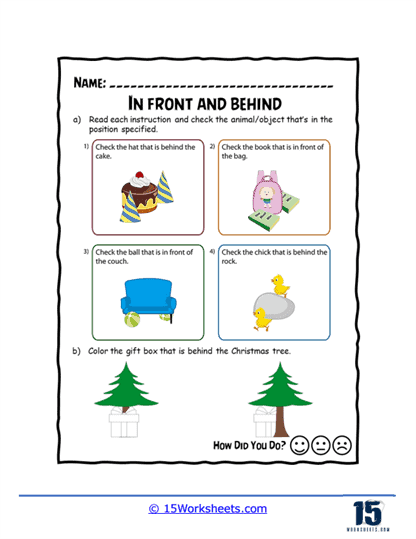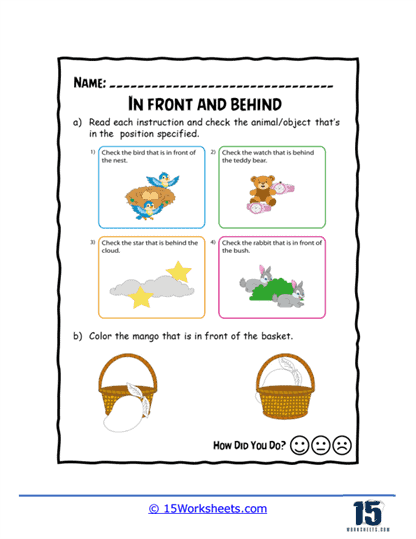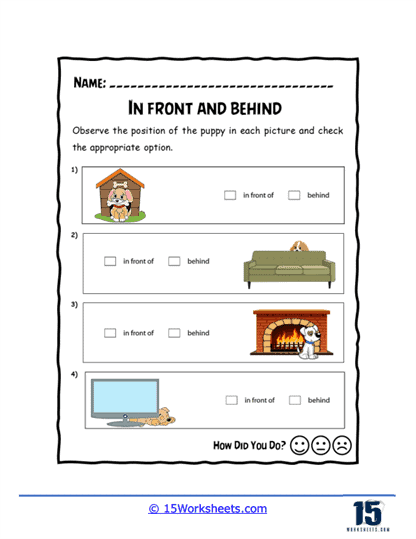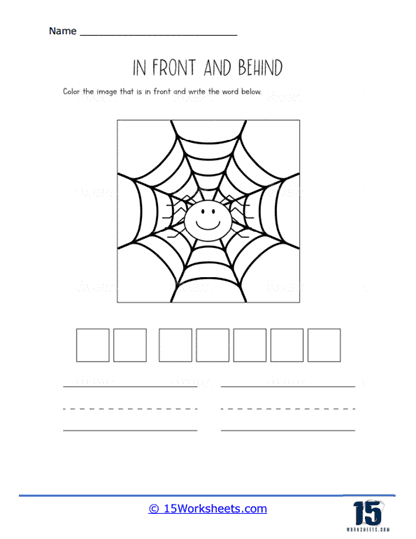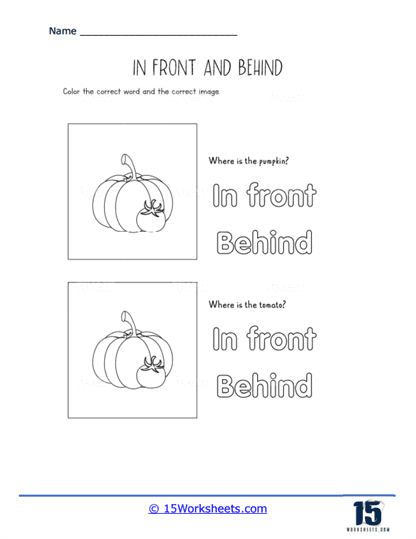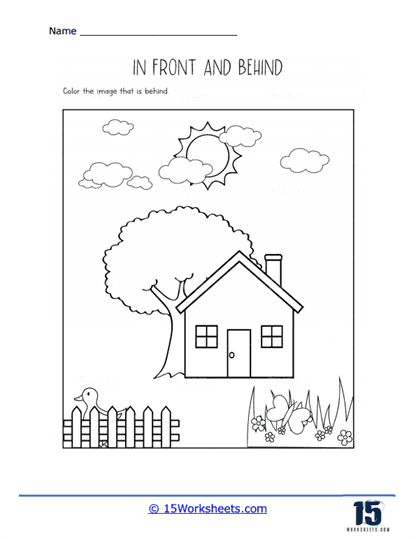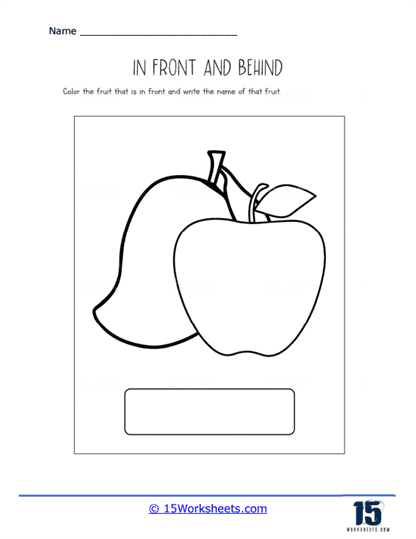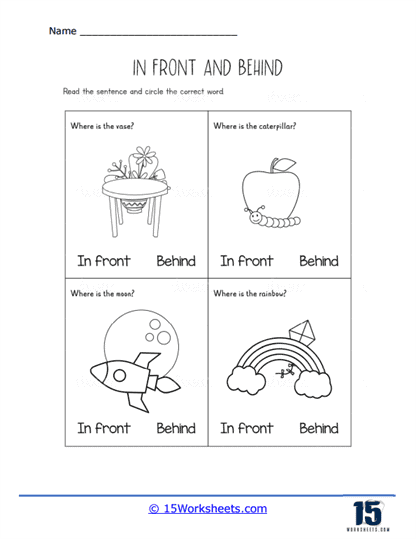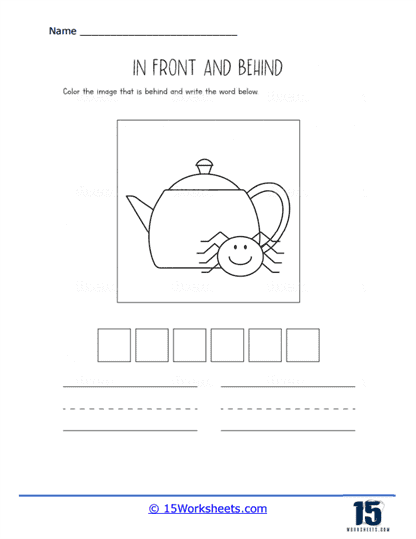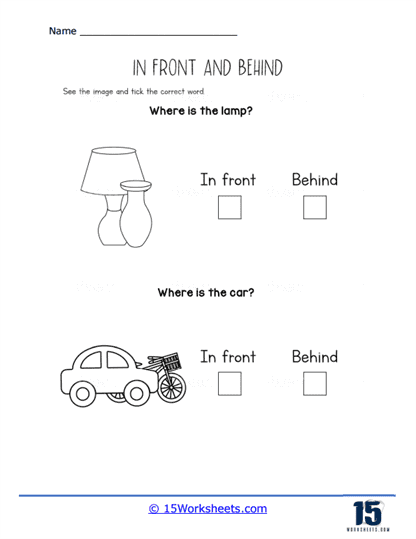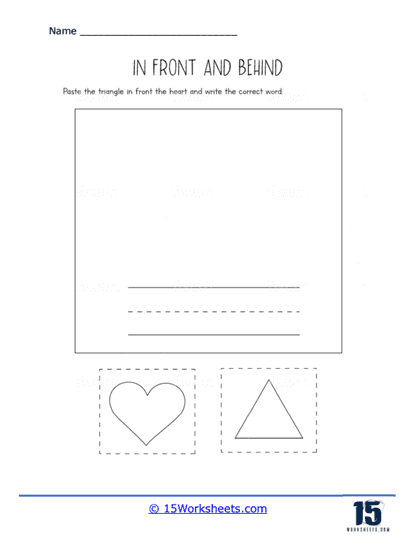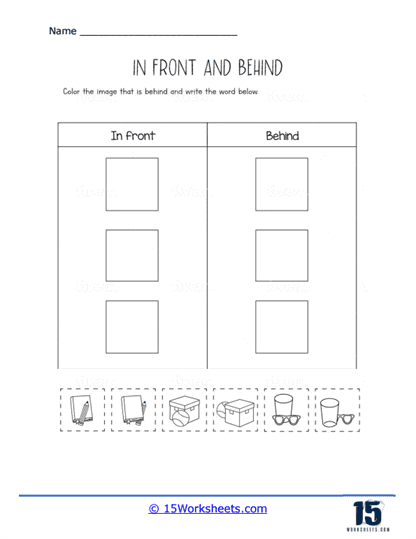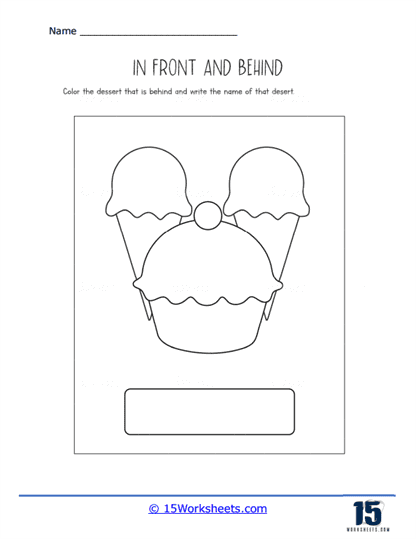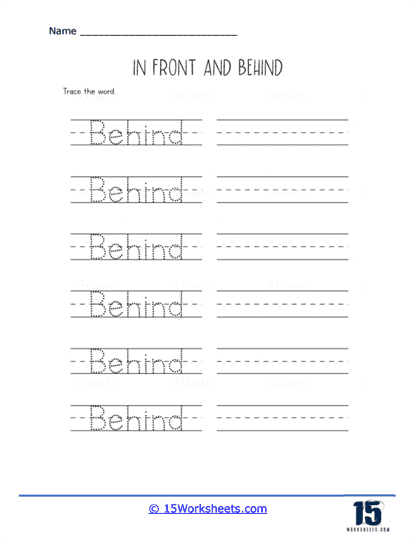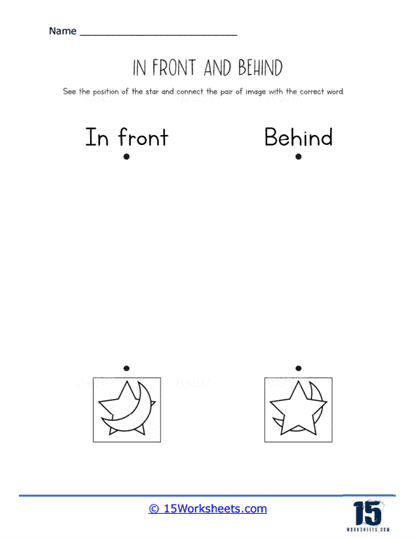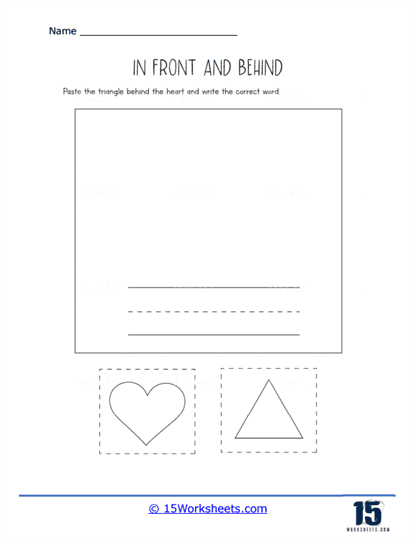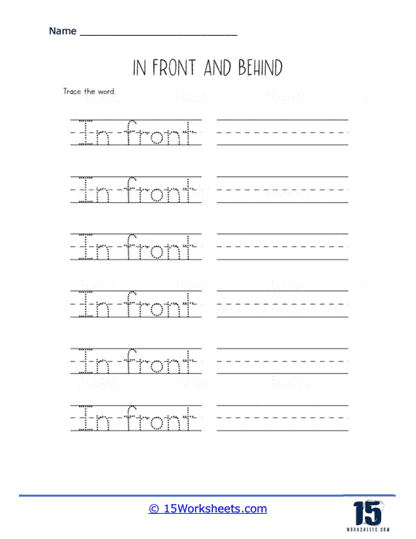In Front of or Behind Worksheets
About These 15 Worksheets
These worksheets will help kids understand the concept of spatial relationships, specifically as they relate to positions in front of or behind other objects. These words are prepositions which describe where an object is located in relation to another object. For instance, if you have a ball and a box, and the ball is placed on the side closer to you and the box is farther away, the ball is “in front of” the box from your perspective. On the other hand, if the ball is farther away and the box is closer to you, the ball is “behind” the box.
On these worksheets, you might see pictures where certain objects or characters are placed in front of or behind others. The task for the child would be to identify and label or circle the objects based on their position.
For example, there might be a picture of a cat sitting in front of a tree and a dog sitting behind the tree. The worksheet might ask the child to circle the animal that is “in front of” the tree or color the animal that is “behind” it.
How To Teach This Concept
Teaching the concepts of “in front of” and “behind” to children is a crucial part of their spatial and cognitive development. This understanding helps children to accurately perceive their surroundings and express their observations. It aids in their language comprehension and paves the way for more advanced learning in the future. Here’s a comprehensive guide on how you can effectively teach these important concepts:
1. Demonstration and Real-life Examples – Start by demonstrating what “in front of” and “behind” mean using real-life objects. For example, you could use toy cars or dolls and position one “in front of” or “behind” the other. Clearly explain what you’re doing – “The blue car is in front of the red car,” or “The doll is behind the tree.” Direct, physical examples make the abstract concept easier for children to grasp.
2. Interactive Play – Children learn best when they are having fun. Create interactive scenarios for the child to experience these concepts first hand. For instance, during a game of hide-and-seek, children can hide “behind” a tree or stand “in front of” a wall. As they play, emphasize these terms to reinforce the learning.
3. Storytelling and Picture Books – Utilize picture books or stories that involve these spatial concepts. As you read, emphasize the terms and ask questions like, “Who is standing in front of the house?” or “What is behind the door?” This encourages children to actively engage with the story while practicing these concepts.
4. Daily Conversations – Incorporate “in front of” and “behind” in your everyday conversations and routines. When you’re out for a walk, point out the buildings that are “in front of” you or the park that is “behind” you. Consistent use of these terms will reinforce their meanings.
5. Drawing and Craft Activities – Get the child involved in drawing or craft activities where they need to place items “in front of” or “behind” something else. For example, they could paste a sticker of a dog “behind” a house on a piece of paper. This encourages creativity while reinforcing the spatial concepts.
6. Worksheets – Our worksheets are a great way for children to practice these concepts. These worksheets typically involve identifying, coloring, or drawing objects that are “in front of” or “behind” others. They provide a structured learning experience and help improve the child’s fine motor skills.
7. Games – Make learning fun by incorporating these concepts into games. For instance, play a game of “Simon Says” using the terms. “Simon says, stand in front of the chair,” or “Simon says, go behind the table.” Games allow children to learn these concepts in a relaxed and enjoyable environment.
8. Songs and Rhymes – There are many children’s songs and nursery rhymes that can help reinforce the concepts of “in front of” and “behind”. Songs are a fun way to remember these concepts, and children often enjoy acting out the lyrics.
In conclusion, teaching the concepts of “in front of” and “behind” requires patience, repetition, and variety in teaching methods. Every child learns at their own pace, and it’s important to maintain a positive, encouraging atmosphere as they grasp these foundational spatial concepts. By incorporating these lessons into everyday life and making learning enjoyable, these terms will soon become a natural part of a child’s vocabulary.

